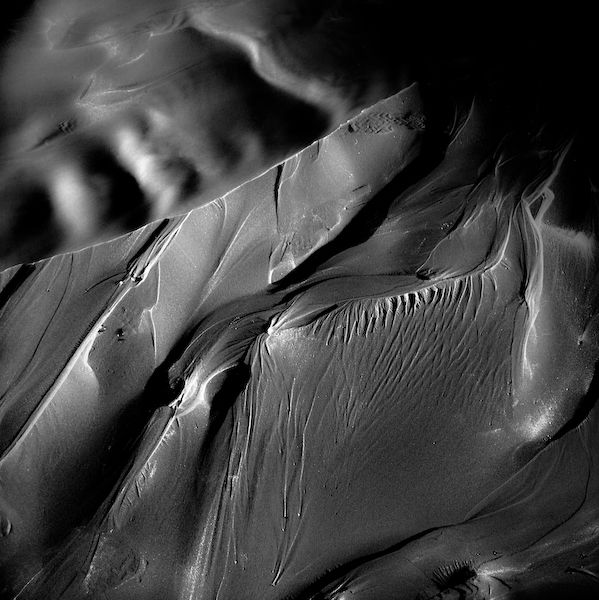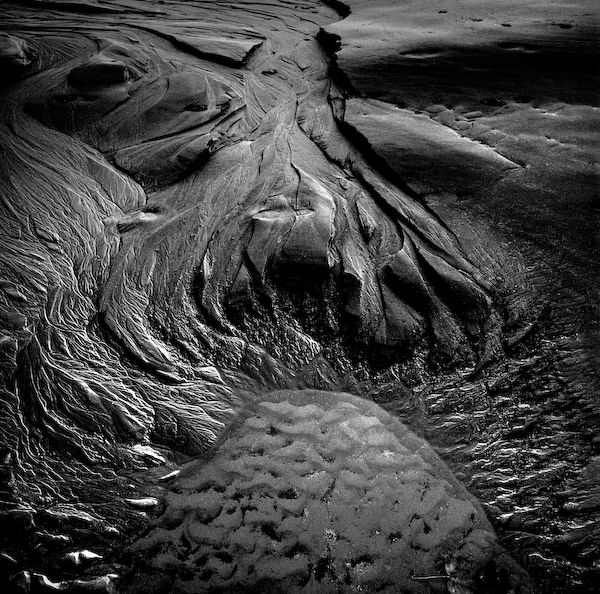|
September 5, 2013
Michael Jackson's Other Small Worlds project explores the unusual patterns in the sand created by the tides at Poppit Sands, Pembrokeshire, in Wales. The project interests me, given my own work along the beaches at Victor Harbor in South Australia.
Jackson photographs the details and patterns and motion of a moment in the sand created by the constant change of tides:
 Michael Jackson, Poppit Beach, Wales, silver gelatin print, from the series Other Small Worlds
Michael Jackson, Poppit Beach, Wales, silver gelatin print, from the series Other Small Worlds
Jackson has been photographing at Poppit Sands for six years running. He says:
“Through photographing a single location over a long period of time I find that I can study certain aspects of the three elements available to me – sand, water and sky – and try to focus in on the relationships that they have with each other and how these specifics can blend to create an image of strength and excitement.”
Though the emphasis is on the unusual rather than the beautiful, the goal is a combination of the unusual and the beautiful.
 Michael Jackson, Poppit Beach, Wales, silver gelatin print, from the series Other Small Worlds
Michael Jackson, Poppit Beach, Wales, silver gelatin print, from the series Other Small Worlds
The work quite often shows the negative of what Jackson saw.
Jackson says:
When I look through the viewfinder I imagine the final image and make adjustments to get that image. You could say that a painter’s interpretation of a subject doesn’t look like the real world and nobody would question it – so why is it questioned when a photographer does it? I use the negative of the image because I find that it excites me – the darks turn to glowing highlights and at the end of the day the negative is the actual solid thing that I am left with in the camera. The piece of film is the record of my visit. Displaying the negative as it really is could be more truthful to my photography than inverting it to bring it back to ‘reality’.
The work is an interpretation of the sand patterns on the beach that go beyond the initial layers of experience from the first couple of visits.
|
